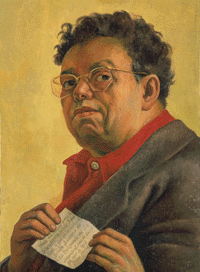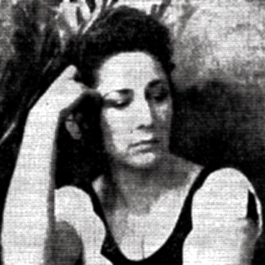|
Diego Rivera's Translator's Note: It is of historical interest to explain that this tribute was written in support of the current in Mexican dance represented by Waldeen, initiated by her in the late 1930s, which became an integral part of the mainstream of Mexico's great artistic renaissance. That movement, born of the Mexican Revolution, set afire a blaze of nationalistically-oriented artistic creativity that dominated the cultural scene in Mexico for decades to come. The importance assumed by the movement in general as a leftward political force brought it under attack by contrary interests both native and foreign. The negation of the Waldeen school of Mexican dance, in particular, in the name of avantgardism and anti-nationalism, was well under way in the mid-1950s when Rivera published this statement in México en la cultura, the Sunday supplement of Mexico's newspaper, Novedades.
The state of the dance and choreography in Mexico twenty-five and thirty years ago must be kept in mind in order to fully appreciate what was accomplished by the initiators of the dance and choreography of today: They created ballet of an authentically national character which was, at the same time, of a quality so pure and deep-rooted that it was recognized internationally as universal. But it was precisely the potency of the national experience that explains this. For it has been demonstrated in practice a thousand times over that only the profoundly national and, hence, the profoundly human, ascends to the sphere of universality, and in the semi-colonial artistic milieu of North, Central, and South America this is still confused by so many with the imitation of the ordinary and most banal productions of Europe. A dispassionate analysis of the contribution of each of the dancers responsible for the development of Mexican ballet would be most useful. And if we place in evidence the foundations and fundamental structure that is provided the people by the people themselves, on the one hand, and the contribution of the pioneer Mexican dancers, male and female, on the other, no one will be able to deny, unless blinded by foolishness or jealousy, that more came here from outside to develop the values of their own art moved by a fervent and impelling love of Mexico and things Mexican and who — we must not be afraid to say it — very often penetrated deeper and recognized more readily the essences that went into creating the choreography of Mexico today. Mastery of the techniques of choreography was not the only determining factor in that contribution. It is possible to be a great dancer who is also a great choreographer, with due world recognition, but one who, because of having developed abroad, is unable to graft his or her allogenic art onto the tree firmly rooted in the native soil. There are notorious and distressing examples of this phenomenon: those perfectly capable of staging Shakespearean works but who failed disastrously, drowning in a puddle of banality and stereotypes, when they attempted to create Mexican ballet.
A feat of the kind was possible thanks to the omnipotent engineering of creative poetic power, because only poets are capable of building roads like that for the people. Such is the case of Waldeen. And I refer not only to the poetic power expressed through dance; the great Waldeen is a splendid poet. A splendid poet in English who sacrificed her renown to create art with human beings in Mexico. I can bear witness to this not only by the intensity of emotion I felt in the verses of this beautiful and admirable woman, but through the testimony, as well, of our Walt Whitman of Indo-America, Pablo Neruda, who wrote to her, deeply moved, after she translated poetry of his into English: "Waldeen, thank you, for your poems of my poems, which are better than mine." Because of that poetic power coupled with a fully rounded culture developed in the most progressive and beneficent direction for humankind, Waldeen was capable of devoting two decades of her life, talent, knowledge, and beauty, to enriching Mexico. And so, in addition to appreciating her, it behooves Mexico to love her. In each of her dance movements, she offered our country a jewel. Let us, at least, repay her with love, admiration, and respect. Those of us unable to do so will have gravely belittled us in our own eyes and before the entire world of our time. Above programs, successes, and any statistics of art stands this truth of love. 
|

